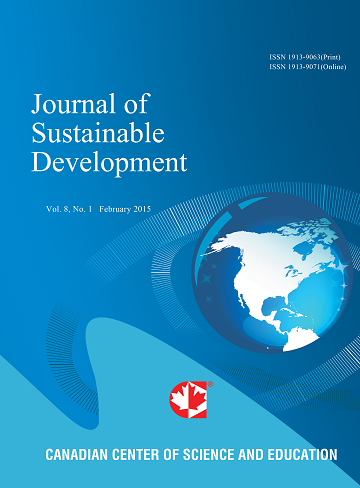Viewpoints of the Architects on Using Artificial Intelligence in Green Architectural Design: A Case Study in the City of Kerman, Iran
- Ayda Gharaei
- Elnaz Shirvanisaadatabadi
- Sima Salahshour
Abstract
In architecture, AI can perform many tasks during the architectural design process, so it is necessary to understand this technology and its advantages and disadvantages, especially for those concerned with environmental and sustainable aspects. There are gaps and ambiguities in relation to the effect of using AI in architecture, especially when it comes to the principles of the green architecture, particularly in Iran. Therefore, the current study was formulated to determine the possibility of AI in supporting green architecture design, to determine the possibility of AI in achieving the principles of green architecture, to examine the architects' viewpoints regarding the role of AI in achieving the principles of green architecture by using a questionnaire, and to determine the most common AI programs used by architects the most. To address the research objectives, a questionnaire was adopted, and back-to-back translated, and distributed among 46 architects who worked in Kerman city, Iran. The data was collected during October 2024, and to analyze, SPSS Version 25 was used. The results of the study showed that to a great extent, AI can support green architecture design because majority of the respondents confirmed that AI can give multiple alternatives to environmental treatments and can help the designer make design decisions to achieve the green architecture principles. Overall, it was concluded that AI can achieve principles of green architecture.
- Full Text:
 PDF
PDF
- DOI:10.5539/jsd.v18n3p46
Journal Metrics
Index
- Academic Journals Database
- ACNP
- AGRICOLA
- ANVUR (Italian National Agency for the Evaluation of Universities and Research Institutes)
- Berkeley Library
- CAB Abstracts
- CNKI Scholar
- COPAC
- CrossRef
- DTU Library
- EBSCOhost
- Elektronische Zeitschriftenbibliothek (EZB)
- EuroPub Database
- Excellence in Research for Australia (ERA)
- Genamics JournalSeek
- GETIT@YALE (Yale University Library)
- Ghent University Library
- Google Scholar
- Harvard Library
- INDEX ISLAMICUS
- Infotrieve
- Jisc Library Hub Discover
- JournalGuide
- JournalTOCs
- LOCKSS
- Max Planck Institutes
- MIAR
- Mir@bel
- NewJour
- Norwegian Centre for Research Data (NSD)
- Open J-Gate
- PKP Open Archives Harvester
- Pollution Abstracts
- Publons
- Pubmed journal list
- RePEc
- ROAD
- SafetyLit
- Scilit
- SHERPA/RoMEO
- Standard Periodical Directory
- Stanford Libraries
- UCR Library
- Ulrich's
- UniCat
- Universe Digital Library
- UoS Library
- WJCI Report
- WorldCat
- WorldWideScience
- Zeitschriften Daten Bank (ZDB)
Contact
- Sherry SunEditorial Assistant
- jsd@ccsenet.org
